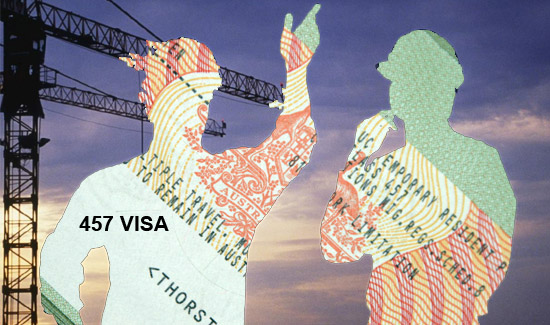Introducing the TSS: Five things you need to know about Australia’s 457 visa replacement
For decades, the 457 has been the most popular path to Australia and has supplemented serious skill shortages in industries like engineering, IT and health. In 2017 and early 2018, the Australian Government set out to reform Australia’s temporary work (subclass 457) visa? or as well all know it, ‘the 457?.
As of March 2018, the 457 was officially abolished. At this time, no new applications to this visa will be accepted, however existing visas will still remain valid.
What’s in its place?
Replacing the 457 is the new employer-sponsored work visa called the Temporary Skills Shortage (subclass 482) visa, nicknamed the TSS.
If you’re already familiar with the 457, there are a few aspects of the TSS that you will be accustomed to (namely, the Temporary Skilled Migration Income Threshold).
In the Peopleconnexion offices, we’ve been keeping our eyes on these changes to understand how they will affect our candidates and clients. Here is a two-minute digest of the most important change that have come into effect:
1. There is a new list of eligible occupations available
Upon the announcement of the abolition the 457 subclass visa last year, the Australian Government released a new list of occupations that will be eligible for the TSS visa. Recently, a more inclusive list was created to service the needs of regional Australia, aptly named the Regional Occupation List (ROL).
2. Labour Market Testing will be mandatory for most occupations
For recruiters and employers, this means that evidence of domestic recruitment within a specified period will be required at the time of nomination. These periods are dependent on the stream of occupation.
3. The Skilling Australians Fund (SAF) levy will be implemented later this month
The SAF levy has not yet been introduced, however is widely expected to be implemented later this month. Under the new TSS system, all visa nominations will require a payment to the SAF.
This fund is aimed at providing training for Australians for the most in-demand skills the country currently relies on migration to service.
The levy amount is charged upfront, per year of the employee’s proposed nomination period. For small businesses (with an annual turnover less than AUD $10 million), the levy is set at $1,200 per year. For all other businesses, this amount is set at $1,800 annually.
4. Increased level of accountability
Once the new system is ushered in, case officers will be given the authority to request skill assessments from a nominee should there be any doubt as to the authenticity of their supporting documents.
Each new applicant will also need to meet the Genuine Temporary Entrant (GTE) criteria to assess whether they intend to stay in Australia on a temporary basis to fulfil an employment contract. Anyone who is familiar with student visas may be familiar with this criteria, however it is still unclear how this will be enforced under the TSS.
5. New Skill Shortage Streams
In place of the 457, two new streams of the TSS visa are:
- Short Term Skills Shortage Stream: One which grants a two-year stay and can be renewed for another two years, but will not have a path to residency unless the applicant is in a regional area included on the Reginal Occupation List.
- Medium and Long Term Strategic Shortage Stream: A longer-term visa granting a four-year stay and a path to residency after three years of holding a TSS visa. There are some exceptions regarding the applicant’s role, salary and the size of their employer.
The longer-term visas will see the permanent residence eligibility extended from two to three years, with both streams now requiring at least two years? worth of relevant work experience (as opposed to just a relevant qualification).
The challenge for employers in the engineering industry in particular, will be finding the right people to fill the roles required to service Australia’s infrastructure boom, and migration and offshore talent sponsorship is a solution we help clients and candidates with.
